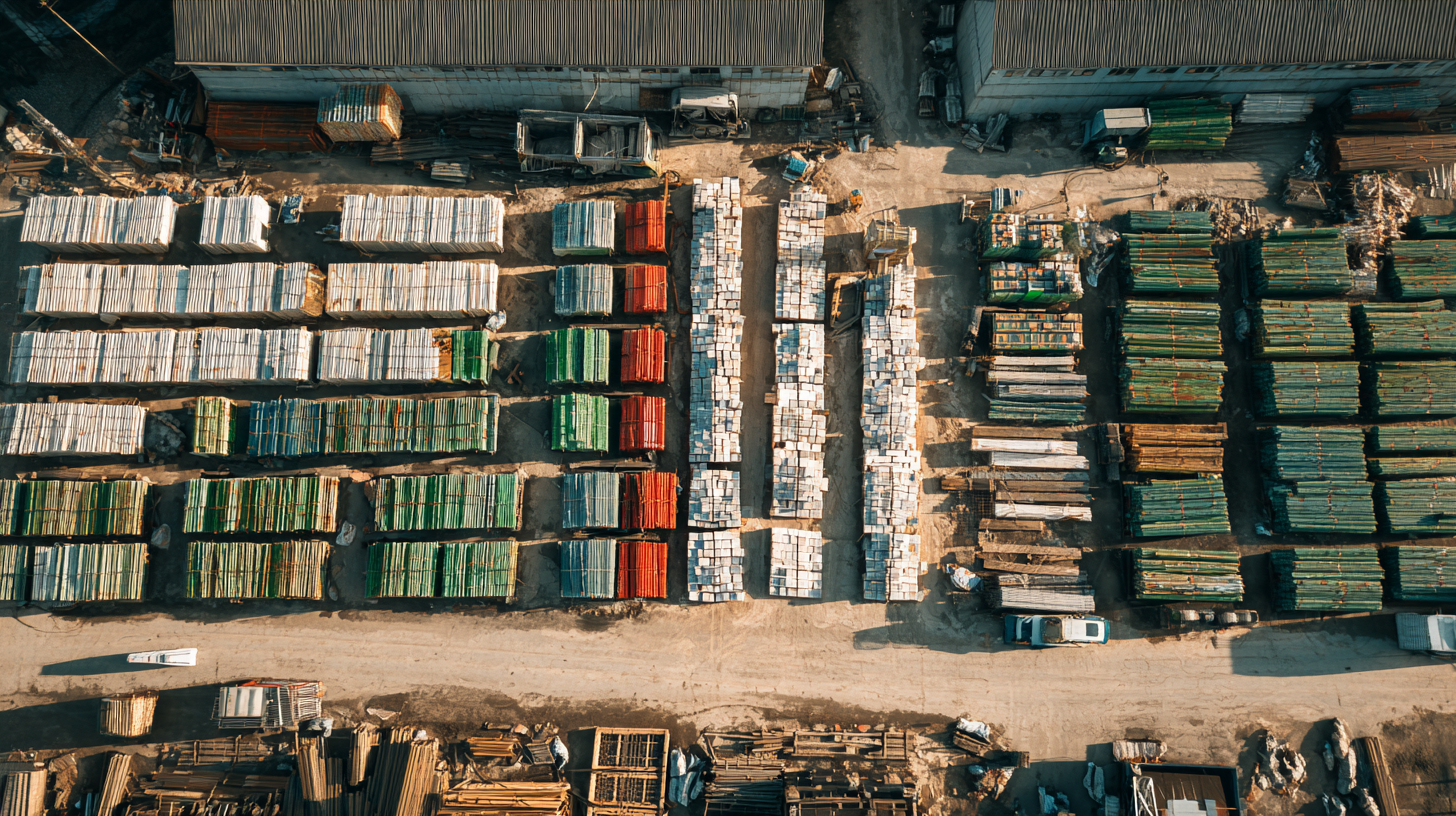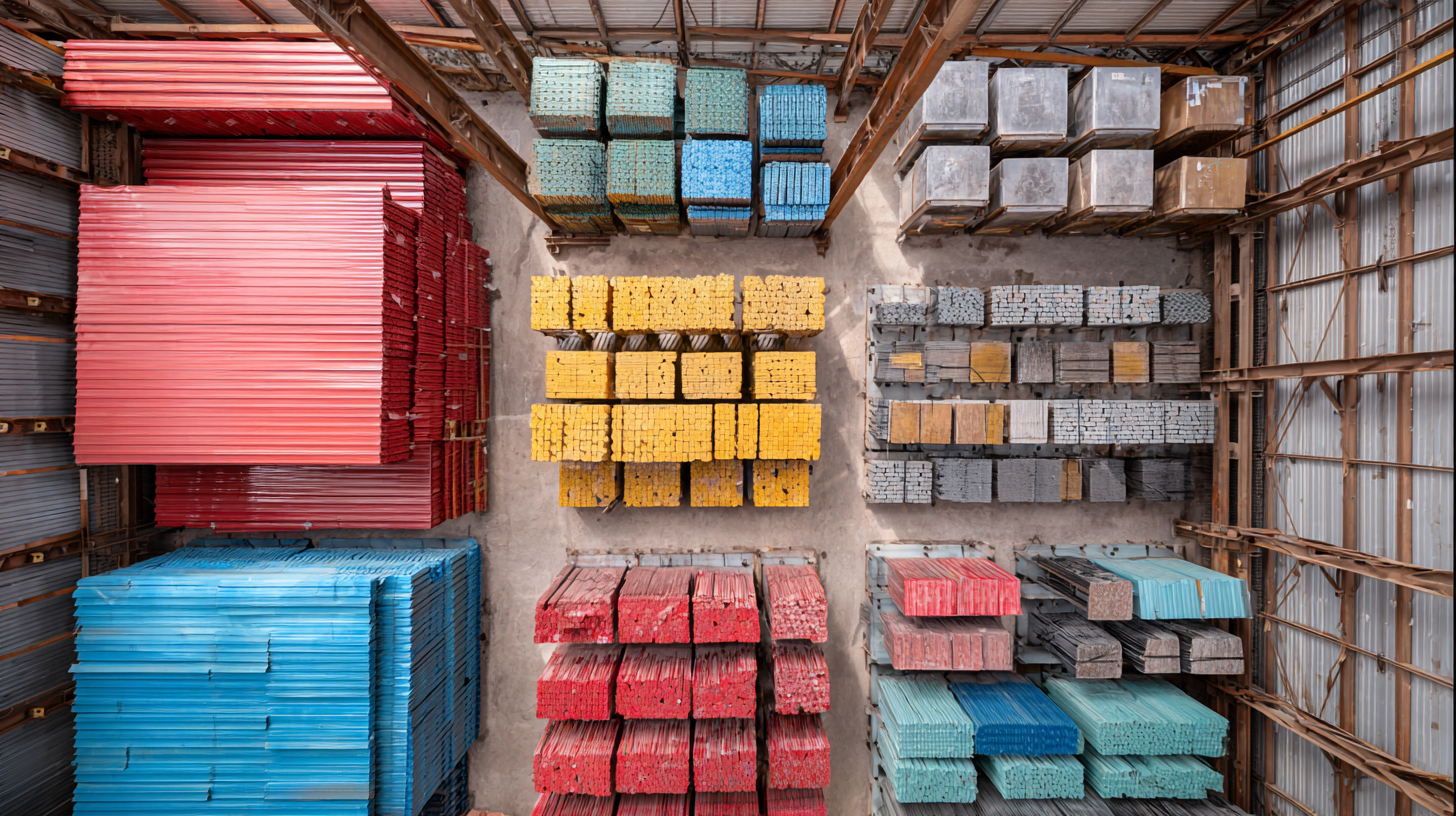
Leave Your Message
-
Phone
-
E-mail
-
Whatsapp

In the construction industry, selecting the right roofing material is critical for ensuring durability and performance. According to a recent report by Research and Markets, the global roofing materials market is expected to reach $120 billion by 2026, highlighting the increasing demand for high-quality roof systems.
This surge in demand has led to a proliferation of roof sheet options from various manufacturers, each showcasing unique materials and designs tailored to diverse climatic conditions and architectural styles. As we navigate through this wide array of choices, understanding the offerings from different Roof Sheet Factories becomes paramount.
From metal and asphalt sheets to innovative composite materials, each option comes with its own set of benefits and considerations that can significantly impact both the functionality and aesthetics of a building. This blog aims to provide a comprehensive checklist to facilitate informed decision-making when selecting roof sheets from the available manufacturers.

When it comes to selecting roof sheets, understanding the variety of materials available is essential for making an informed choice. Among the most popular options are metal, PVC, and fiberglass sheets, each offering unique benefits tailored to different needs. Metal roof sheets, known for their durability and resistance to harsh weather, provide excellent longevity and minimal maintenance. They are also energy efficient and can improve insulation, making them a smart investment for both residential and commercial properties.
On the other hand, PVC roof sheets stand out due to their affordability and lightweight nature. They are particularly suitable for projects requiring a quick installation process. Furthermore, PVC is resistant to chemicals and offers good UV protection, ensuring the longevity of the roof without significant upkeep. Lastly, fiberglass sheets are favored for their transparency and ability to allow natural light while maintaining structural integrity. This makes them an appealing choice for greenhouses or buildings where light management is crucial. Each type of roof sheet has distinct advantages, making it important to assess specific project requirements before deciding on the ideal material.
Choosing the right roof sheets for your project involves considering several key factors that can significantly impact both the performance and longevity of the roofing. The global roofing materials market value is projected to reach an impressive $133.2 billion in 2023, with an expected compound annual growth rate (CAGR) of 4.6% from 2024 to 2032. This growth can be attributed to the increasing demand for roofing solutions that support solar technologies, as homeowners and businesses alike seek to save on energy costs and promote sustainability.
When evaluating diverse roof sheet options, one must consider the materials' durability, weight, and resistance to environmental factors. For instance, the recycled rubber roofing market is expected to grow from $190 million in 2025 to $332.03 million by 2033, reflecting a CAGR of 4.7%. Such materials not only contribute to a more sustainable building environment but also offer considerable long-term savings. As you explore your roofing options, look for solutions that align with both your project's requirements and the emerging trends in the industry.
| Material Type | Thickness (mm) | Color Options | Weight (kg/m²) | Fire Resistance | Cost ($/m²) |
|---|---|---|---|---|---|
| Metal | 0.5 | Red, Blue, Green | 7.5 | Class A | 5.00 |
| Polycarbonate | 3.0 | Clear, Frosted | 2.0 | Class B | 10.00 |
| Asphalt Shingles | 0.3 | Black, Gray, Brown | 8.0 | Class A | 4.50 |
| Tiles | 10.0 | Terracotta, Slate | 50.0 | Class A | 20.00 |
| Synthetic | 0.4 | Various Colors | 3.5 | Class A | 6.50 |
When considering roof sheet options, it's essential to conduct a comparative analysis of products from various manufacturers. Different factories offer unique materials, designs, and durability features that can significantly influence the longevity and performance of your roofing system. For instance, metal roof sheets typically provide excellent resistance to weather elements, while PVC options may excel in energy efficiency and light weight. Analyzing these differences can help find the best solution tailored to your specific needs.
Tip: Always check if the manufacturers adhere to industry standards and certifications. This not only assures quality but also enhances the longevity of the roofing material.

The choice of color and texture can also impact the aesthetic value and energy efficiency of your roofing. Some manufacturers provide specialized coatings that reflect sunlight, thus reducing heat absorption. Others may offer customizable options that can seamlessly blend with your building’s architecture. Evaluating these choices will help create a solution that is both functional and visually appealing.
Tip: Review customer feedback and case studies to gauge real-world performance of different roofing products. This can provide valuable insights that specifications alone might not convey.
The roofing industry is witnessing a transformative shift with the advent of innovative technologies and materials, reshaping market dynamics. Reports from industry analysts, such as MarketsandMarkets, indicate that the global roofing market is projected to reach $156.1 billion by 2026, growing at a CAGR of 4.8%. This growth is fueled by advancements in roof sheet technologies that emphasize durability, energy efficiency, and sustainability. Notably, manufacturers are increasingly adopting eco-friendly materials, such as recycled plastics and metal composites, which not only reduce waste but also enhance energy efficiency by reflecting solar heat.
**Tips:** When considering roof sheet options, prioritize materials that come with a long warranty. This often signifies a manufacturer's confidence in their product's longevity and performance. Additionally, look for options that meet energy efficiency standards to potentially lower your energy bills in the long run.
Moreover, trends like solar panel integration and the use of cool roofing technologies are gaining traction. The Cool Roof Rating Council reports that reflective roof surfaces can reduce energy costs by up to 15%, making them a smart choice for commercial buildings. As consumers become increasingly eco-conscious, choosing innovative roof sheet options that marry aesthetics with functionality is essential for modern constructions.
**Tips:** Always check for certifications that validate the energy efficiency claims of roofing materials. These certifications can guide you towards making responsible investments while enhancing the value of your property.

Sustainability has become a critical consideration in the roofing industry, with eco-friendly alternatives gaining traction among consumers and manufacturers alike. Recent studies show that over 30% of homeowners are prioritizing sustainable materials for their roofing projects. This shift is not merely a trend; it reflects a growing awareness of the environmental impact associated with traditional roofing materials, such as asphalt shingles, which contribute significantly to landfill waste.
Innovative options like metal, recycled rubber, and green roofs are leading the charge in sustainable roofing solutions. For instance, metal roofs not only have a lifespan exceeding 50 years but are also recyclable at the end of their life cycle, reducing environmental strain. Likewise, the use of recycled rubber shingles, which can be made from tires, diverts waste from landfills and offers a durable, energy-efficient roofing choice. According to a recent report by the National Institute of Building Sciences, integrating sustainable roofing practices can save homeowners up to 20% on energy bills, further underlining the economic benefits alongside environmental considerations. As the industry evolves, it is imperative that consumers and contractors alike explore and adapt these sustainable roofing options.